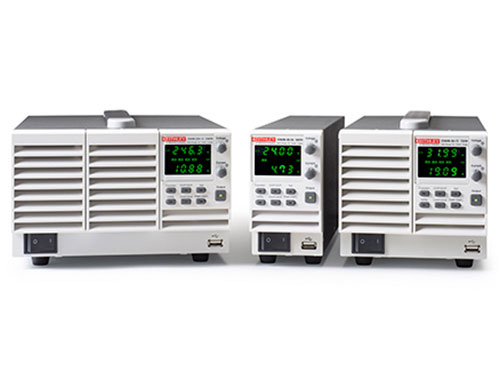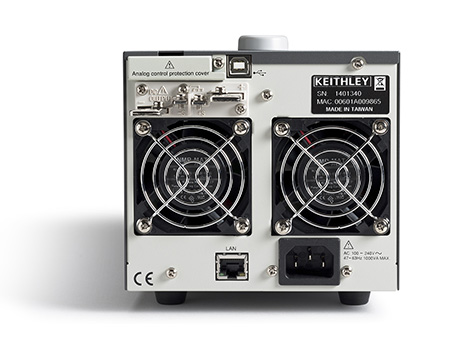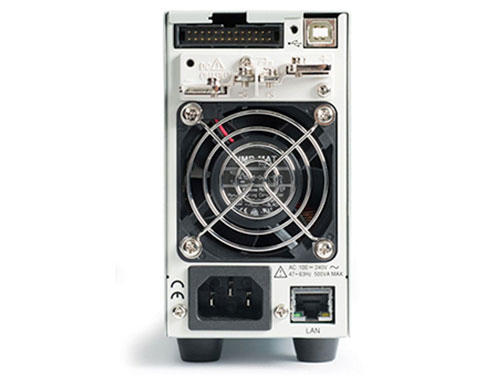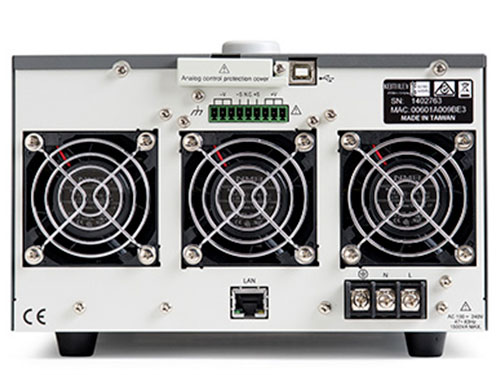Features
|
Benefits
|
| Programmable voltage or current rise and fall times from 0.1V/s to 1600V/s or 0.01A/s to 216A/s (model dependent) |
Prevents damage from inrush current to loads that have low impedance when power is initially supplied. |
| Constant current priority setting |
Reduces voltage and current overshoot when powering LEDs. |
| Programmable output resistance |
Allows simulating a battery’s output characteristics. |
| Analog input control |
Supports creating voltage profiles that simulate how a battery responds to a fast changing load current or generating a combined DC output level with an AC signal superimposed on it to test how a circuit responds to noise on its DC power source. |
| Internal test sequence mode |
Allows outputting a set of voltage levels for varying time intervals at each level. The test sequence can be stored and used repeatedly to determine DUT performance at different levels. |
| Series or parallel configurable  |
Delivers up to 3240W when three units are combined in parallel. |
| Fast discharge capability and 1ms transient recovery time to load changes. |
Minimizes test times in automated test systems. |
| Fit six 360W, three 720W, or two 1080W units in a standard rack width |
Save bench and test system rack space. |









